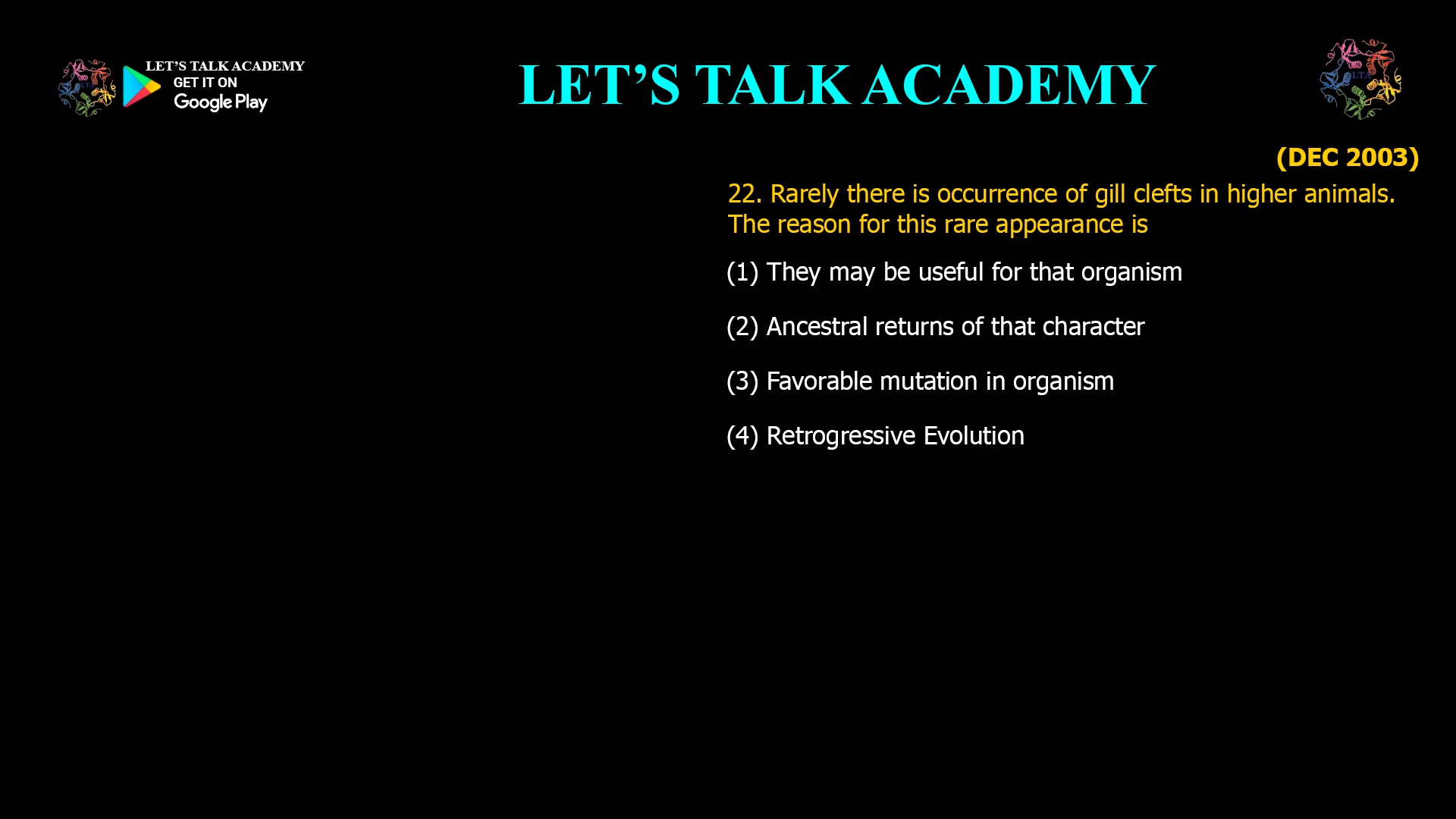- Rarely there is occurrence of gill clefts in higher animals.
The reason for this rare appearance is
(1) They may be useful for that organism
(2) Ancestral returns of that character
(3) Favorable mutation in organism
(4) Retrogressive Evolution
Introduction
Occasionally, higher animals exhibit the rare appearance of gill clefts during development. This fascinating phenomenon has intrigued scientists and students alike, prompting questions about its evolutionary and developmental significance. Why do these structures, reminiscent of fish gills, appear in the embryos of mammals, birds, and reptiles? The answer lies in the concept of ancestral return of that character, a powerful testament to our shared evolutionary heritage.
What Are Gill Clefts?
Gill clefts, or more accurately pharyngeal arches (sometimes called pharyngeal pouches or slits), are structures that appear during the embryonic development of all vertebrates. In fish and some aquatic animals, these arches develop into functional gills used for respiration. In higher vertebrates, such as mammals, birds, and reptiles, these arches do not become gills but instead form parts of the jaw, ear, neck, and throat.
The Evolutionary Explanation: Ancestral Return
The rare appearance of gill clefts in higher animals is best explained as an ancestral return of that character. This means that these structures are evolutionary remnants inherited from distant ancestors—specifically, fish-like creatures in which gill slits played a vital role in breathing.
How Does This Happen?
-
During early embryonic development, all vertebrates pass through a stage where pharyngeal arches are present.
-
In fish, these arches become gills.
-
In higher animals, they are repurposed for entirely different functions, but their initial appearance in the embryo is a recapitulation of our evolutionary past.
-
This is not due to a new mutation or a useful adaptation for the current organism, but a developmental echo from our shared ancestry.
Scientific Support for Ancestral Return
-
The presence of pharyngeal arches in embryos is a classic example of recapitulation theory (ontogeny recapitulates phylogeny), which suggests that embryonic development mirrors evolutionary history.
-
Genetic and developmental studies confirm that these structures are homologous across vertebrates, further supporting their ancestral origin.
Why Not the Other Options?
-
They may be useful for that organism: In higher animals, gill clefts serve no respiratory function and are not retained in the adult form.
-
Favorable mutation in organism: The appearance of gill clefts is not a result of a new, favorable mutation but a re-expression of an ancient trait.
-
Retrogressive Evolution: This term refers to the loss of advanced features and the reappearance of primitive ones in a population, not just a temporary embryonic structure.
Conclusion
The rare occurrence of gill clefts in higher animals is a striking example of the ancestral return of that character. It highlights the deep evolutionary connections among all vertebrates and provides a window into our ancient aquatic origins. These embryonic features remind us that, despite our diversity, all vertebrates share a common evolutionary blueprint.
Correct answer:
(2) Ancestral returns of that character
SEO-Friendly Slugs:
-
rare-gill-clefts-higher-animals-ancestral-return-evolution
-
embryonic-gill-clefts-evolutionary-significance
-
why-higher-animals-have-gill-clefts
-
ancestral-traits-in-vertebrate-embryos
-
recapitulation-theory-gill-clefts
Understanding these evolutionary echoes in development enriches our appreciation of biology and the shared journey of life on Earth.




3 Comments
Manisha choudhary
October 2, 2025According to recapitulation theory
Embryonic development mirror evolutionary theory ancestral return of that character
Sonal Nagar
November 12, 2025ancestral return of that characte
Komal Sharma
November 27, 2025The rare occurrence of gill clefts in higher animals is a striking example of the ancestral return of that character.